A combination of flowering plants and attractive foliage usually comes to mind when we imagine a beautiful garden. What about the plants we grow for food? From flowering herbs to leafy vegetables, many edible plants have shapes, textures and colors that can add both beauty to the landscape and flavor to your dinner plate. Let’s break down the border between our ornamental and edible gardens and see how edible plants can do double duty.
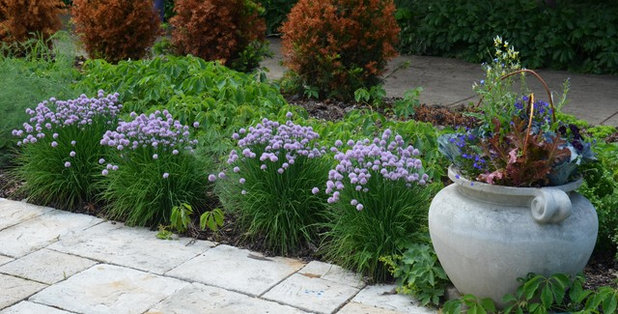
Noelle Johnson Landscape Consulting
At first glance, people who stroll by this landscape at the Olbrich Botanical Gardens in Madison, Wisconsin, see mounded, flowering plants next to a container filled with a variety of colorful plants. Take a closer look — those attractive flowering plants are chives, whose leaves are more often seen diced and sprinkled on a dinner plate. The container is filled with a visually pleasing combination of flowering ornamentals paired with the colorful leafy greens of red sail lettuce and kale.
The best edible plants to use as ornamentals are those that are easy to grow, are relatively pest free and have textured leaves (ruffled, bumpy, spiky etc.), colorful leaves, veins or even flowers. The characteristics that make the edibles we grow look good on our plates can also beautify the garden. Let’s look at some good edibles to grow for their ornamental value.
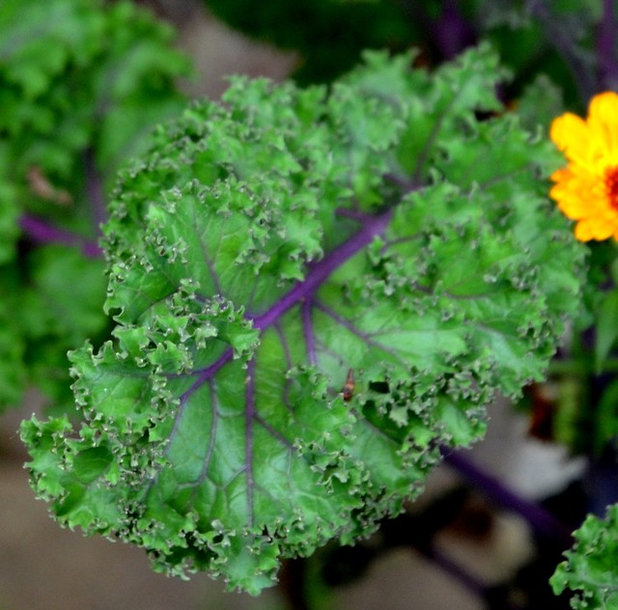
Noelle Johnson Landscape Consulting
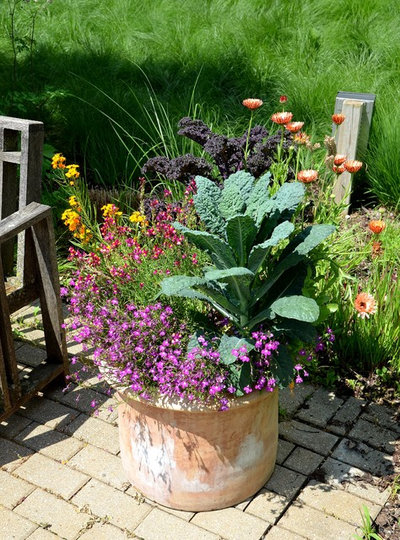
Noelle Johnson Landscape Consulting
Kale Kale is one of the most popular edible plants in ornamental gardens. The ruffled edges and purple veins are very attractive and add both texture and color contrast to the garden. Green and red kale are shown here growing among flowering plants in a container.
There are basically two types of kale: those that are typically grown for eating and those that are referred to as ornamental kale, because of their decorative leaves. Ornamental kale is edible but is grown primarily for its looks. It has a slightly more bitter taste than regular kale; the bitterness can be largely removed by boiling the leaves before using them in your favorite recipe.
See how to grow kale
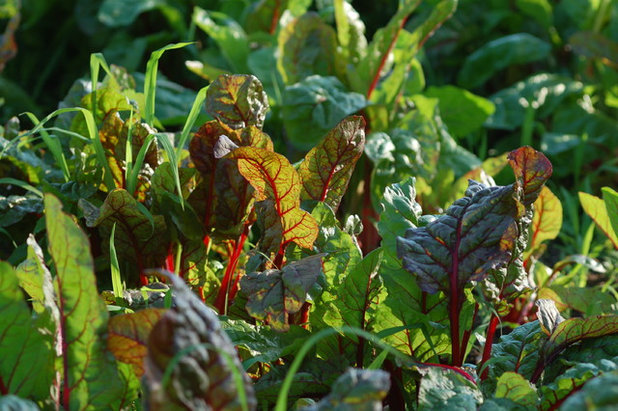
Sparrow Landscaping LLC
Swiss ChardSwiss chard is another edible plant that adds vibrant color to an ornamental garden with its multicolored stalks and veins running through dark green leaves.
See how to grow Swiss chard
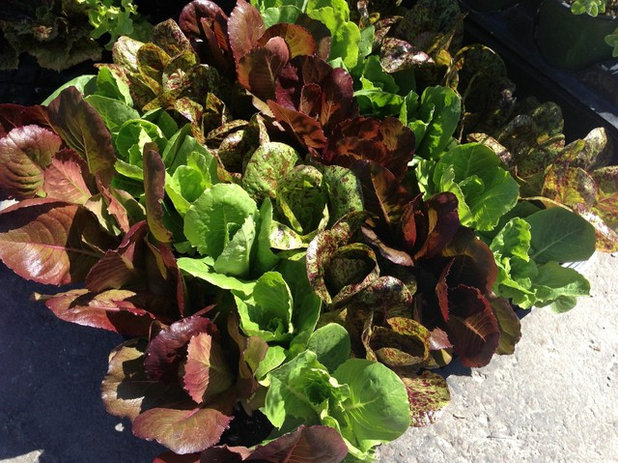
Noelle Johnson Landscape Consulting
Lettuces and Salad GreensColorful leaf lettuce
varieties are both delicious and beautiful. They are very easy to grow, especially in containers, where they make a great filler plant.
See how to grow lettuce
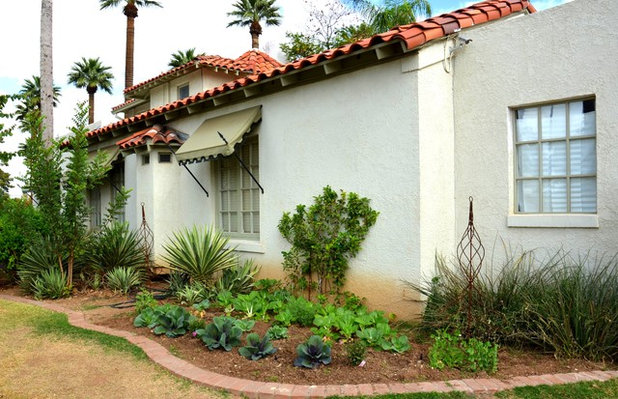
Noelle Johnson Landscape Consulting
Edible leafy greens, including bok choy, cabbage and sugar snap peas, do double duty in this Phoenix home’s front yard by adding beauty to the landscape and later being harvested and eaten.
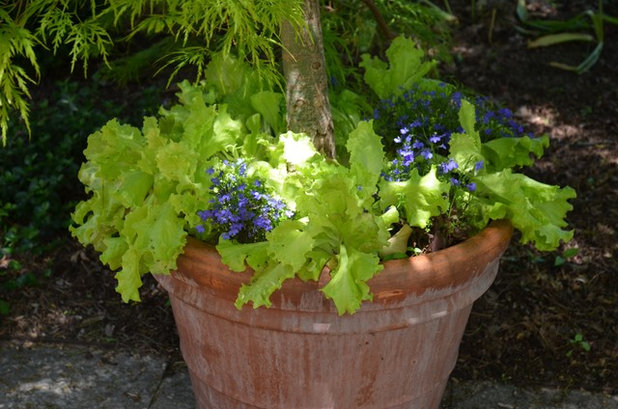
Noelle Johnson Landscape Consulting
You don’t have to get fancy with adding edibles to the landscape. Simply adding leaf lettuce to the base of a potted tree or shrub will work just fine. Here it’s paired with blue-flowering lobelia.

Glenna Partridge Garden Design
HerbsYou can never go wrong with herbs. They are considered some of the easiest edibles to grow, mix well with ornamentals and other edibles, and grow well in the ground or in containers.
Parsley is often used as a green filler plant; its ruffled leaves create great textural contrast with plants with larger leaves. This planted container includes parsley, aeonium and agave.

Glenna Partridge Garden Design
In addition to parsley, herbs such as green and purple basil, chives, rosemary, sage and thyme all make great ornamental plants. Sage, lettuce and other edibles are mixed with tulips in this trio of terra-cotta pots.
See how to grow more herbs
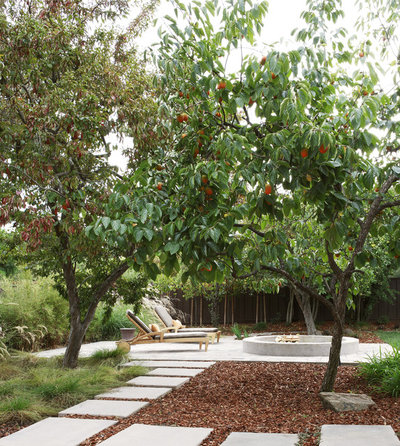
Arterra Landscape Architects
Fruit TreesFruit trees add shade and beauty with the bonus of producing delicious fruit. Apple, apricot, cherry, citrus, peach and plum trees are all great choices for adding beauty to the landscape. Spring brings beautiful blossoms followed by attractive green leaves and then colorful fruit. Here, two persimmon trees frame an outdoor gathering space.
Tip: Keep in mind that having trees that bear delicious fresh fruit means more maintenance and cleanup.
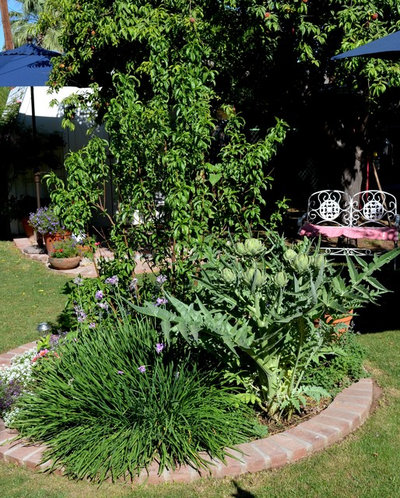
Noelle Johnson Landscape Consulting
In this garden bed, a dwarf fruit tree is surrounded by chives and an artichoke plant.
See how to grow more fruit trees

Noelle Johnson Landscape Consulting
ArtichokesArtichoke plants are increasingly being used for their ornamental value due to their large leaves and vibrant purple flowers. They provide great textural and color contrast in the garden. You can pick the ripe artichoke heads for your dinner table or let them go to flower and enjoy the striking purple blossoms. Artichokes are perennial, unlike many vegetables, and will return each spring.
The artichoke plant in this garden bed is joined by flowering annuals, roses and a small tree. Pepper plants can also add beauty with their brightly colored fruit.
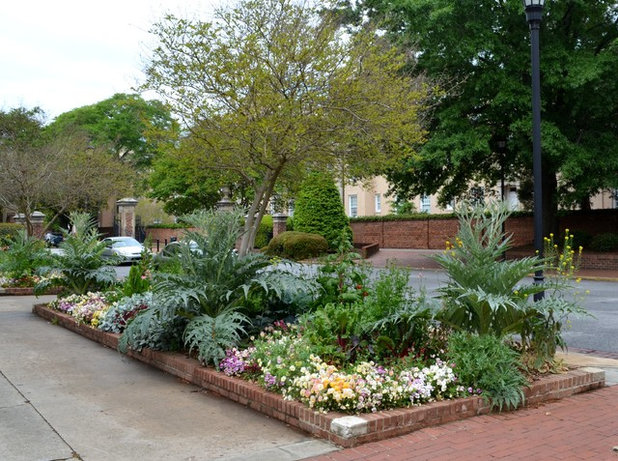
Noelle Johnson Landscape Consulting
At first glance you’ll notice masses of flowering violas in varying pastel shades in this garden bed at the University of South Carolina. But when you take a closer look, you’ll find edible plants interspersed throughout the bed for their ornamental value. In the center of the bed you’ll see a large artichoke plant, with its spiky, gray-green leaves.
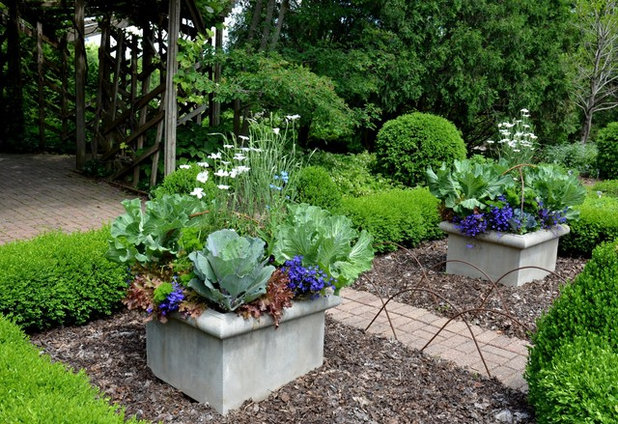
Noelle Johnson Landscape Consulting
Here we see planters filled with a combination of edible and ornamental plants, such as kale, red sail lettuce and lobelia at Olbrich Botanical Gardens.
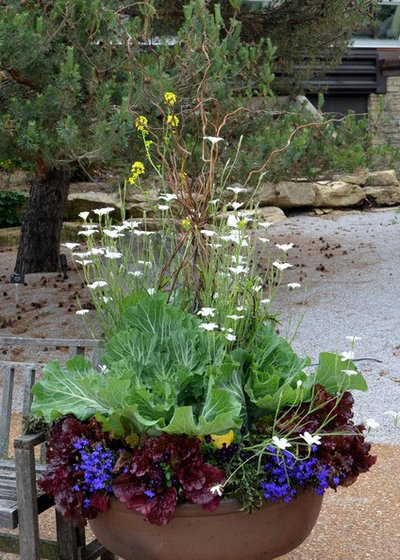
Noelle Johnson Landscape Consulting
Edible plants, even when grown for their ornamental value, need fertile soil to look their best. Amend your current soil with compost and apply fertilizer monthly for best results. Whether you eat your edible ornamentals is up to you. But if you are going to eat them, be sure to stay away from using insecticides unless they are labeled for edible plants.
The next time you need to fill in spots in your garden, you may want to peruse the edible plants at the nursery first and envision the beauty that they could add to your landscape.
More guides to growing edibles





